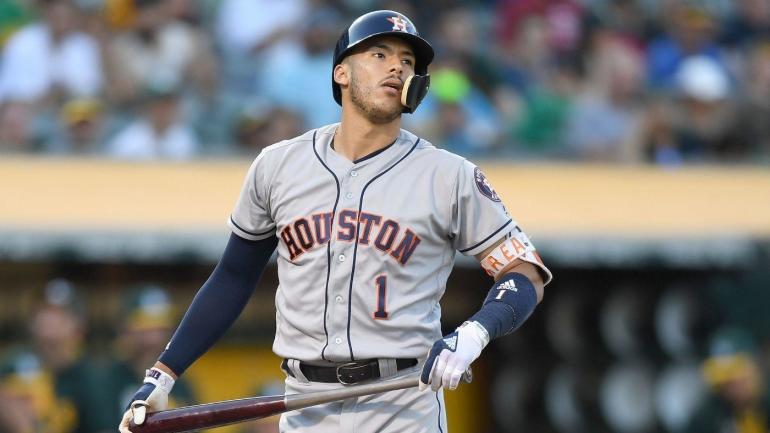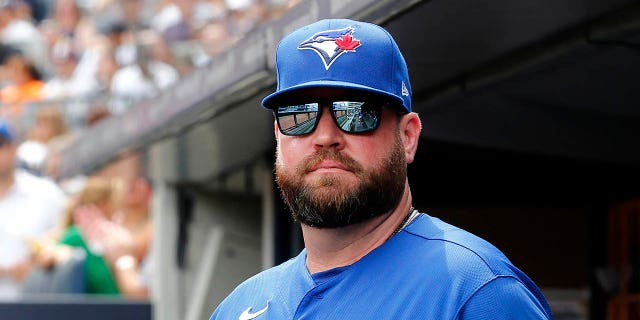
Major League Baseball's offseason has been on pause for more than a month and a half now, ever since the 30 club owners voted unanimously to lock out the players and commence with the league's first work stoppage since 1994-95. When the lockout ends -- that is, when both the owners and MLB's Players Association have ratified a new Collective Bargaining Agreement -- the league will have to find quick resolutions for the rest of its offseason business, including a trade market that never kicked into gear and a free-agent market that still has several top players remaining on it.
It's a given that the longer front offices have to play red team, blue team on a player, the more likely they are to identify flaws with that player. Sometimes, those findings prove beneficial to their final analysis; sometimes, it comes across as overthinking things. Whatever the case, we decided we'd play along by highlighting a potential sticking point with the 10 best free agents remaining on our offseason top-50 list.
Before we get to the exercise, we're legally obligated to include some caveats. Foremost, the 10 players covered below are very good at baseball; observing a flaw in their game is neither an attempt to minimize that fact, nor an attempt to suggest they don't deserve the contracts we believe they'll sign in the coming weeks. Additionally, we'll note that in certain cases, this exercise can bolster the perception of a player when their supposed "big flaw" is a trifling matter that doesn't change much.
To recap: these are all high-quality players, and the blemishes we're covering here are largely small beans. Got it? Good, now let's get to the meat of our skeptic's guide.
The fault line: The Astros' cheating scandal
For as skilled as Correa is (and, clearly, he's skilled enough to rank No. 1 on our offseason list), it's hard to write about him without referencing the Astros' sign-stealing scheme. Tony Adams' independent research revealed that Correa was one of the Houston hitters who was most likely to receive a knowing "bang" during their at-bats in 2017. How much Correa (or any other Astro) benefitted from the tip-off remains unknowable. What is certain is that Correa was a good player back when the Astros' used trash cans only for garbage. He was the No. 1 pick back in his day, and he's had big seasons before and after the scandal's supposed duration. Besides, for better or (likely) worse, the rest of the league seems apathetic to the whole situation; hence George Springer signing a lucrative free-agent contract last winter, and hence the quick returns to dugouts made by AJ Hinch and Alex Cora.
2. Kris Bryant (No. 3 on top 50 list)
The fault line: Swing concerns
You would think that Bryant, a four-time All-Star and a career .278/.376/.504 hitter, would be inoculated from mechanical nitpicks by now. You would be wrong. Bryant's sin is that he's 6-foot-5 and he has the long arms to prove it. Those levers are a potential problem because they often result in a lengthier swing, which in turn could make him susceptible to velocity as his bat speed declines. When, precisely, the switch will flip is to be seen; it doesn't appear to have been last year, as he posted his highest contact rate against pitches that were 95 mph or faster since 2017. Although, to be fair, he did post his worst exit velocity against that subset of pitches since 2018. The lesson here is simple: look closely at any given moment in life, even those that took place during the merriest of times, and you'll find traces of encroaching decay.
The fault line: Age
Other teams might argue that Freeman's biggest blemish is his perceived loyalty to the Braves. Fair enough. For our purposes, the issue is that Freeman is about to enter his age-32 season. (He'll turn 33 come September.) Research has shown that hitters are into their decline phase by the time they reach their mid-30s. Given the rumors that Freeman is seeking a six-year contract, the Braves (or whichever team) will have to have faith in his ability to fend off Father Time longer than the average bear.
4. Trevor Story (No. 11 on top 50 list)
The fault line: Arm strength
We covered Story's decaying cannon earlier in his free agency. We noted then that his arm strength first slid below the positional average for shortstops in 2020. Last offseason didn't help him recover his oomph, and it's anyone's guess if this winter will help him get back to his old form. If the answer proves to be "no," then Story is likely to end up at another position -- presumably second base -- before long. His bat is potent enough to withstand such a move, but it's a consideration teams will have to weigh before they give him a multi-year contract to serve as their shortstop.
The fault line: Position and defense
Castellanos can really hit, and it's a good thing he can because his apparent athleticism has never translated to quality corner-outfield defense. Public-facing fielding metrics mostly stink, but we'll pinch our nose while pointing toward Statcast's Outs Above Average metric. According to that measure, Castellanos has been at least five plays below par in each season dating back to 2016. Just use him at DH, right? Absolutely … except, to quote the man himself: "I don't want to DH." Perhaps Castellanos can be persuaded by his next club (or, at least, by his next check). Until that proves to be the case, his stubbornly substandard glove will remain an issue.
6. Seiya Suzuki (No. 15 on top 50 list)
The fault line: Precedent
So much of player analysis is driven by the past: either in terms of how the player has performed, or in terms of how players with similar attributes have performed. In concert, those aspects form the foundation for most projection systems. What complicates Suzuki's free agency, then, is the lack of precedent. He's coming from Japan's Nippon Professional Baseball league, meaning he's never played in the majors himself; meanwhile, it's been some time since a NPB position player other than Shohei Ohtani came over and had a great deal of success. Suzuki looks like a fair bet to change that trend, but his contract is likely to be suppressed as a result.
The fault line: Durability
This is about as straightforward as it gets, so far as perceived blemishes go. Kershaw missed the Dodgers' postseason run last fall because of forearm and elbow discomfort, adding another medical worry to his collection to go with his history of back problems. Kershaw has reliably started 20 or more games in each of his full big-league seasons (we're obviously excluding 2020 here, though he did take the mound 10 times in 60 games), but it's fair to have additional apprehension about how much longer that will remain true as he enters his age-34 campaign.
8. Kenley Jansen (No. 20 on top 50 list)
The fault line: Control
There are a few ways to view Jansen's season. From one perspective, he remained dominant by holding batters to fewer than five hits and precisely a half of a home run per nine innings. From another, he navigated a lot of foot traffic anyway by issuing a career-worst 4.7 free passes per nine. What's interesting is that Jansen's overall strike rate remained well above the league-average, yet his percentage of plate appearances that started 3-0 shot up. As with the season as a whole, there are multiple conclusions that can be drawn: either he became more likely to work around hitters, or he was more prone to losing his mechanics for entire at-bats at a time. Jansen's quality-of-contact suppression skills could make it a moot point, regardless.
9. Anthony Rizzo (No. 22 on top 50 list)
The fault line: Back woes
As with Kershaw before him, Rizzo's biggest flaw is outside of his control: his health. He's dealt with back problems in the past, and those don't tend to improve with age. (Ask, um, almost anyone.) To Rizzo's credit, he's been able to manage well enough to appear in 345 games over the last three years, or, in roughly 90 percent of his possible contests. There's just no telling if Rizzo will be able to maintain that kind of attendance heading forward, or if he'll end up spending more of his time on the shelf.
The fault line: Last season
Had Conforto qualified for free agency after last season, when he was coming off a career-high 154 OPS+ and he had homered at least 27 times in three consecutive full-fledged campaigns, he would've been higher on the list. Instead, he hit the open market after an uneven season that saw him stumble out of the gate before course-correcting down the stretch. Teams would be justified in wondering if he'll be able to consistently perform the way he did from 2017-20, or if last year is a sign of things to come as he hurtles toward his 29th birthday.
MLB free agency: Breaking down the biggest flaw for each remaining top free agent - CBS Sports
Read More

No comments:
Post a Comment